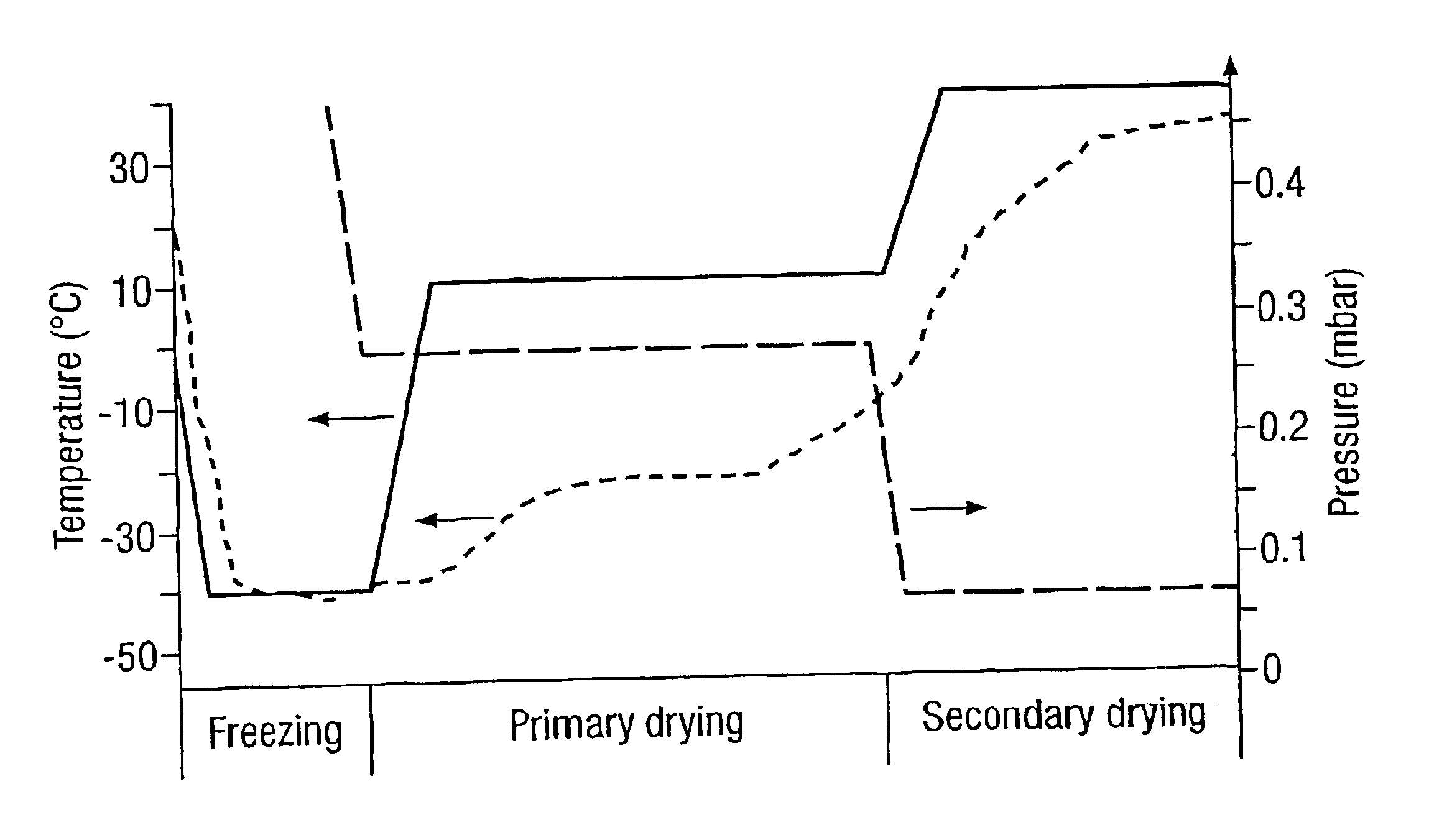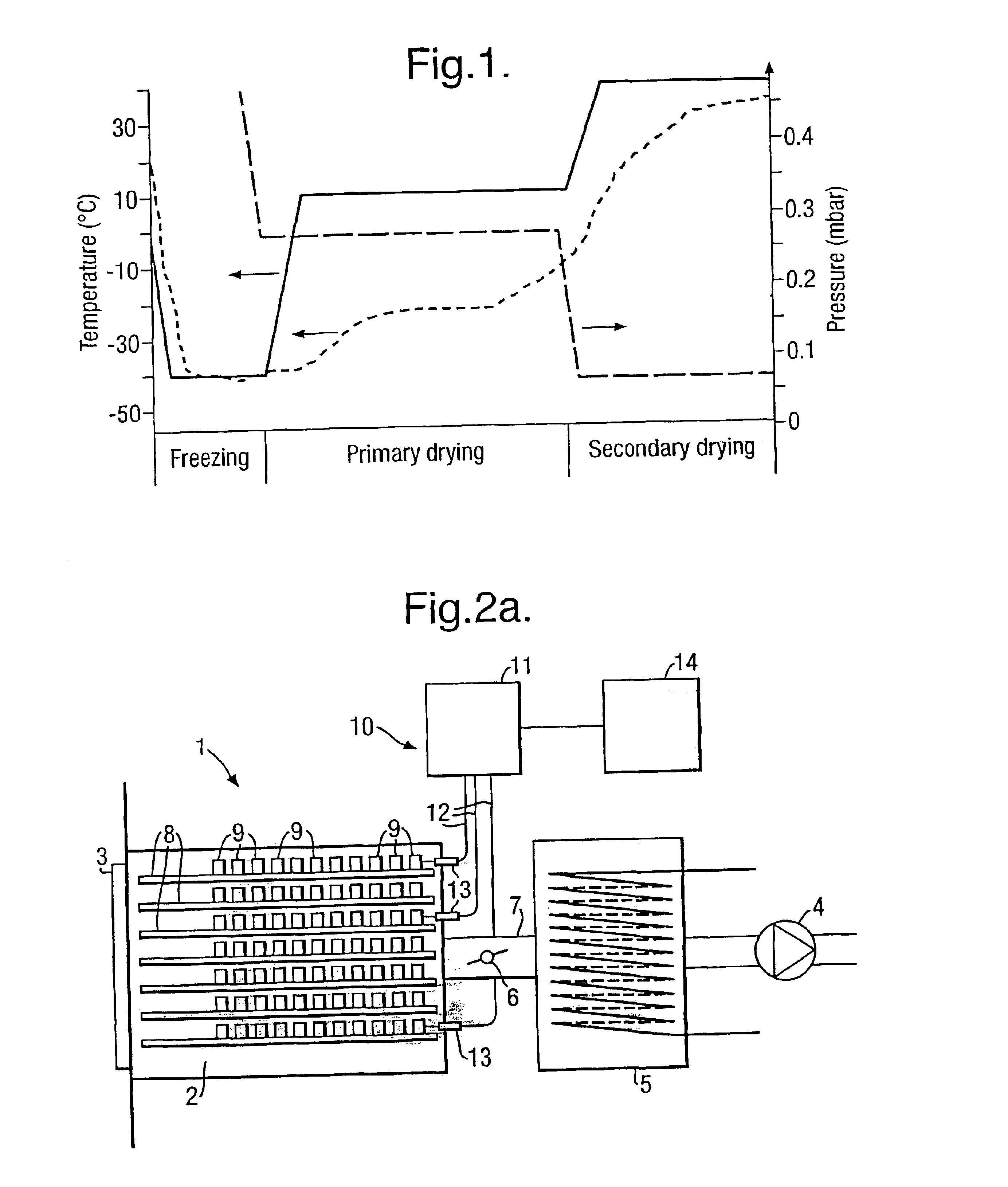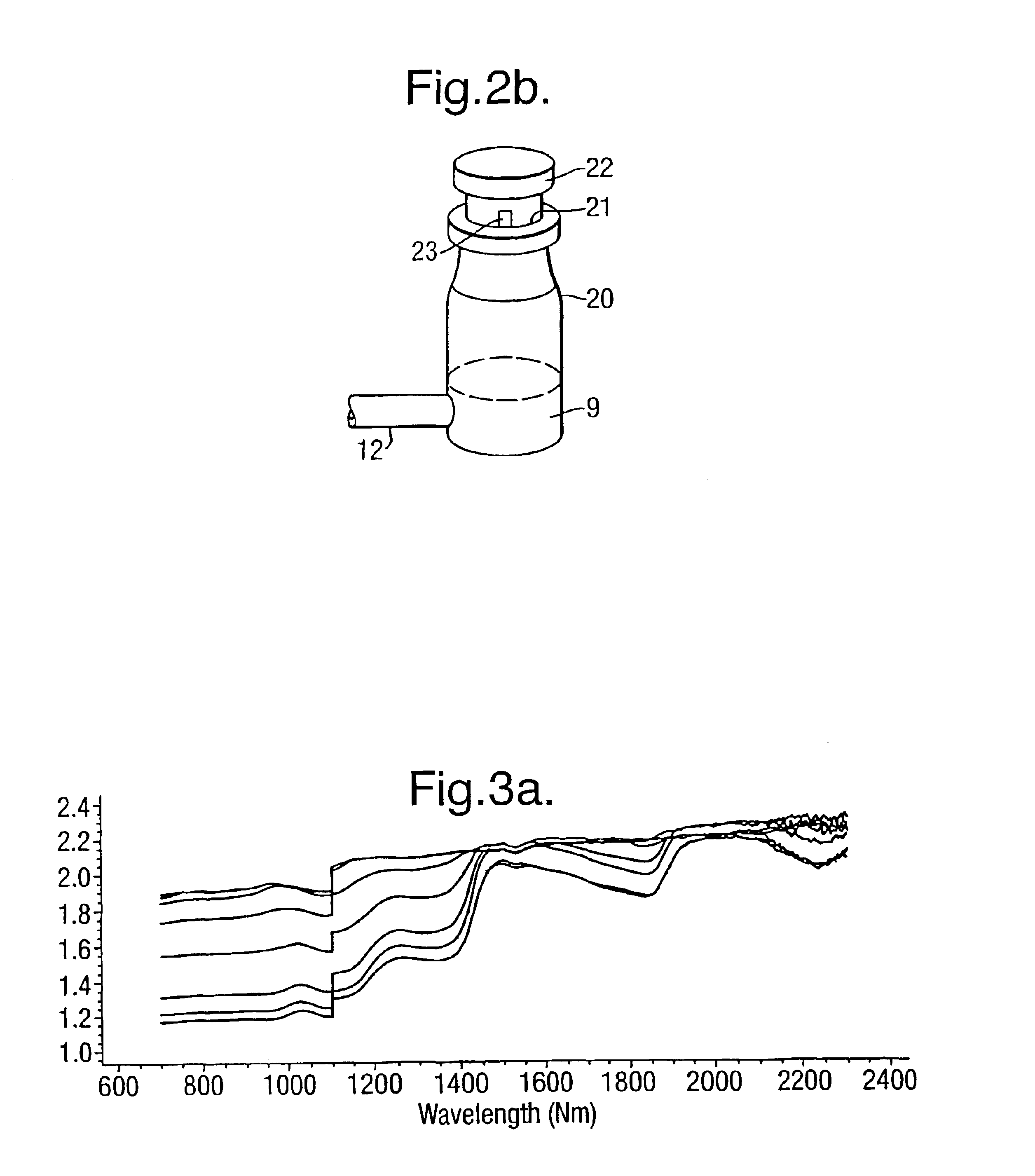Method of monitoring a freeze drying process
a freeze drying and monitoring technology, applied in the field of monitoring a freeze drying process, can solve the problems of unsuitable aseptic processing of thermocouples, inability to easily assess the moisture content of the material itself during the freeze drying process, and difficulty in automatic loading and unloading of materials in vacuum chambers, etc., to achieve the effect of minimising the influence of materials
- Summary
- Abstract
- Description
- Claims
- Application Information
AI Technical Summary
Benefits of technology
Problems solved by technology
Method used
Image
Examples
Embodiment Construction
First, a freeze-drying process will be generally described with reference to FIG. 1 which shows an example of the variation of product temperature (dotted line) and chamber pressure (dashed line) over time during a freeze-drying process in a conventional freeze-drying apparatus, as monitored by conventional thermocouples and a pressure gauge, respectively. The diagram of FIG. 1, was recorded in a freeze-drying apparatus in which the samples of the material to be freeze dried are placed on shelves in the vacuum chamber and are heated by means of temperature-controlled silicone oil flowing through the shelves. In FIG. 1, the shelf temperature (continuous line) is included for reference. Generally, the freeze-drying process includes three main steps: freezing, sublimation (also called primary drying), and desorption (also called secondary drying). In the initial freezing step, the chamber pressure is at atmospheric level and the temperature in the chamber is reduced to allow for solidi...
PUM
| Property | Measurement | Unit |
|---|---|---|
| wavelengths | aaaaa | aaaaa |
| total pressure | aaaaa | aaaaa |
| temperature | aaaaa | aaaaa |
Abstract
Description
Claims
Application Information
 Login to View More
Login to View More - R&D
- Intellectual Property
- Life Sciences
- Materials
- Tech Scout
- Unparalleled Data Quality
- Higher Quality Content
- 60% Fewer Hallucinations
Browse by: Latest US Patents, China's latest patents, Technical Efficacy Thesaurus, Application Domain, Technology Topic, Popular Technical Reports.
© 2025 PatSnap. All rights reserved.Legal|Privacy policy|Modern Slavery Act Transparency Statement|Sitemap|About US| Contact US: help@patsnap.com



